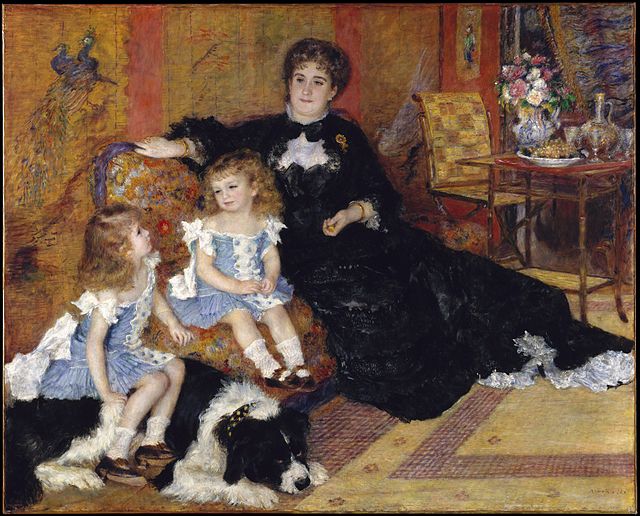Portrait painting is a genre in painting, where the intent is to represent a specific human subject. The term 'portrait painting' can also describe the actual painted portrait. Portraitists may create their work by commission, for public and private persons, or they may be inspired by admiration or affection for the subject. Portraits often serve as important state and family records, as well as remembrances.
Self-portrait of Nicolas Régnier painting a portrait of Vincenzo Giustiniani, 1623–24, Fogg Art Museum.
Frans Hals, later finished by Pieter Codde. De Magere Compagnie. 1637. Oil on canvas, 209 × 429 cm. Group portraits were important in Dutch Golden Age painting
Anthony van Dyck, Charles I in Three Positions, 1635–1636, shows profile, full face and three-quarter views, to send to Bernini in Rome, who was to sculpt a bust from this model.
Mme. Charpentier and her children, 1878, Metropolitan Museum of Art, New York
A hierarchy of genres is any formalization which ranks different genres in an art form in terms of their prestige and cultural value.
Annibale Carracci, An Allegory of Truth and Time (1584–85), an allegorical history painting relying very little upon realism.
Velázquez, portrait painting of Pope Innocent X, c. 1650
A genre painting. Adriaen van Ostade, Fishmonger, 1660–1670, oil on oak, 29 × 26.5 cm, Museum of Fine Arts, Budapest.
A landscape. Themistokles von Eckenbrecher, View of Laerdalsoren, on the Sognefjord, oil on canvas, 1901.








